Treating Red Spots on Face: 6 Natural Ways To Treat Red Spots On Skin And Prevention Tips
What causes red spots on face? How can you treat red spots on face naturally? What are the prevention tips for red spots on skin?
Causes of Red Patches on the Face
The main reasons for red patches on the face can be categorized into three groups: allergens and irritants, environmental factors, and health conditions. Allergens and irritants like soap, cosmetics, spicy food, and certain medications can trigger contact dermatitis and cause facial redness. Environmental factors such as extreme weather changes, including hot and humid or cold and windy conditions, can also lead to facial redness. Additionally, various health conditions like seborrheic dermatitis, eczema, psoriasis, shingles, and rosacea can manifest as red patches on the face.
Seborrheic Dermatitis and Facial Redness
Seborrheic dermatitis is a common skin condition that can cause red, flaky, and greasy patches on the face, particularly on the scalp, ears, eyebrows, and nose. In infants, it is known as cradle cap and appears as white or yellow scaly patches. As the condition persists past infancy, it becomes more flaky and itchy, which is commonly referred to as dandruff.
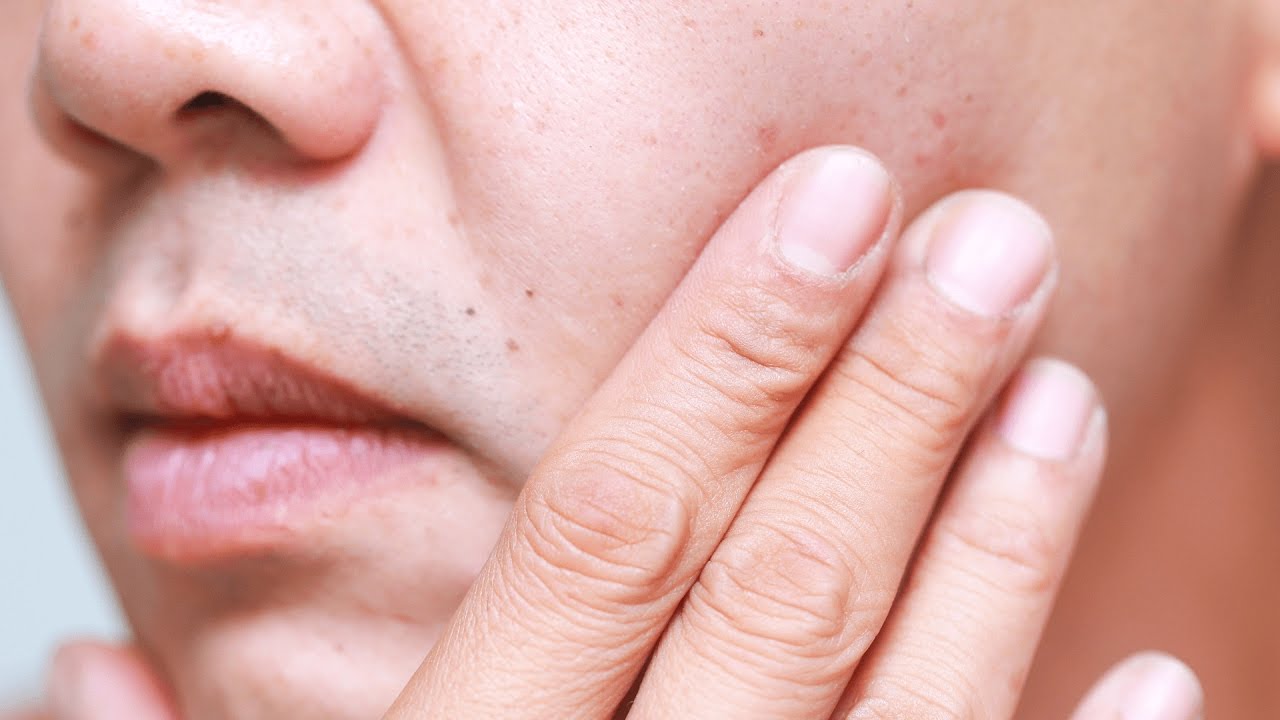
Eczema and Facial Redness
Eczema, or atopic dermatitis, is another common skin condition that can lead to facial redness. In infants, eczema can appear suddenly, causing the skin to become scaly, dry, and very itchy, with the affected areas sometimes draining fluid. In children and adults, eczema often occurs in skin creases, such as the neck, elbows, and knees, and the affected area can appear bumpy, slightly lighter or darker than normal skin, and thickened.
Psoriasis and Facial Redness
Psoriasis, particularly the most common form, plaque psoriasis, can also cause facial redness. Plaque psoriasis appears as plaques of red skin covered by silver-colored scales, and these plaques can be painful and itchy.
6 Natural Ways to Treat Red Spots on the Face
If you’re dealing with red spots on your face, there are several natural remedies you can try to help soothe and treat the issue. These include:
- Using a gentle, fragrance-free cleanser to avoid further irritation
- Applying a cold compress or ice pack to reduce inflammation
- Incorporating aloe vera gel or tea tree oil into your skincare routine
- Trying a DIY oatmeal mask to calm redness and itchiness
- Avoiding known irritants like harsh chemicals, fragrances, and certain foods
- Managing stress levels, as stress can exacerbate skin conditions
Prevention Tips for Red Spots on the Skin
To help prevent the development of red spots on your face, consider the following tips:

- Use gentle, fragrance-free skincare products that are suitable for your skin type
- Protect your skin from harsh environmental factors like extreme weather and UV exposure
- Identify and avoid any known allergens or irritants that may trigger a reaction
- Maintain a healthy lifestyle with a balanced diet, adequate hydration, and stress management
- Consult with a dermatologist to develop a personalized treatment plan for any underlying skin conditions
When to See a Dermatologist
If you’re struggling with persistent or worsening red spots on your face, it’s best to consult a board-certified dermatologist. They can provide a proper diagnosis and recommend the most appropriate treatment plan, whether it’s addressing an underlying skin condition or managing environmental factors. With the right care and treatment, you can effectively manage and prevent red spots on your face.
Key Takeaways
The main causes of red spots on the face can be categorized into allergens and irritants, environmental factors, and health conditions. Seborrheic dermatitis, eczema, and psoriasis are common skin conditions that can lead to facial redness. To treat red spots naturally, you can try gentle cleansers, cold compresses, aloe vera, and oatmeal masks, while also avoiding known irritants and managing stress. Preventive measures include using gentle skincare products, protecting your skin from environmental factors, and consulting a dermatologist if the issue persists.
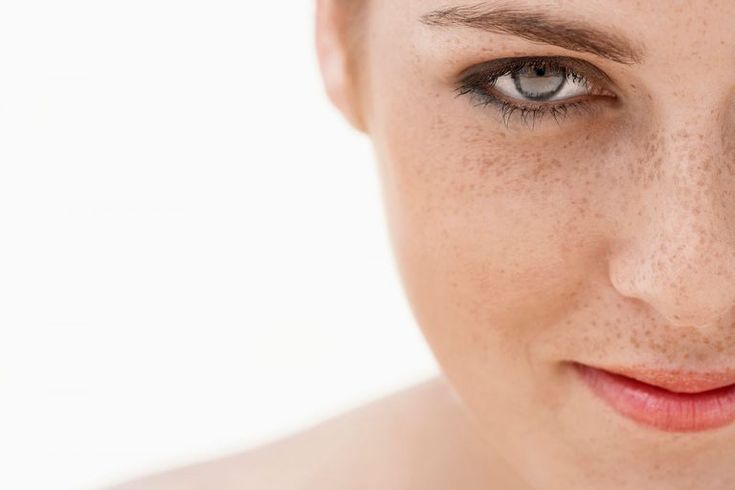
3 Reasons for Red Patches on Your Face
Posted on by Christie Regula
While there are many reasons for red patches on your face to appear, all of these reasons can be summed up into three categories: allergens and irritants, environmental factors, and health conditions. We’ll break each of these categories down, as well as discuss treatment options for red patches on your face.
Can Stress Cause Face Rashes?
Yes, stress can cause facial rashes, more commonly known as hives. In fact, it’s one of the environmental factors that can cause red patches on your face. Hives can also appear on the neck, chest, and arms. They can range in size from tiny dots to large welts and may itch or burn. However, stress is not the only cause for facial redness or rashes.
Why Do I Have Red Blotches on My Face?
As we mentioned above, there are three main categories for possible causes of the red patches on your face. However, these are general categories, and there are many different things within each of these categories that could be causing those red patches. It’s important to seek proper diagnosis and care from a board-certified dermatologist.
However, these are general categories, and there are many different things within each of these categories that could be causing those red patches. It’s important to seek proper diagnosis and care from a board-certified dermatologist.
- Allergens and Irritants
At some point in your life, you’ve probably had an allergic reaction. When an allergic reaction causes a rash, it’s known as contact dermatitis. The face is actually a common place for contact dermatitis to appear, as we often touch our face throughout the day and come into contact with many other things, such as soap or hair dye, that can be irritating to the skin.
Spicy food and alcohol are other common irritants that can cause a red rash on the face. Some medications can cause a red rash to appear as well, especially if you are outdoors. A common medication in this scenario is a cream containing hydrocortisone.
Cosmetics and facial creams can cause red patches on your face if they aren’t made with quality ingredients. And for those with sensitive skin, even if the product is high quality, a red rash may appear if it is not made specifically for sensitive skin. Other common irritants include cleaning products, perfume/cologne, chlorinated water, plants, and nickel.
And for those with sensitive skin, even if the product is high quality, a red rash may appear if it is not made specifically for sensitive skin. Other common irritants include cleaning products, perfume/cologne, chlorinated water, plants, and nickel.
- Environmental Factors
The main environmental factor that can cause red patches on your face is the weather. If you live anywhere (ahem, Pennsylvania) that experiences extreme changes in weather, you know what we’re talking about. And if you don’t, that doesn’t mean you haven’t also experienced weather-induced facial redness.
Hot, humid conditions can cause prickly heat, a rash that causes redness. On the opposite end of the spectrum, cold weather can also cause your face to turn red from dry skin. This is especially the case if you live in windy areas or forget to protect your skin from the winter weather.
- Health Conditions
This category probably has the longest list of different causes, but we’ll focus on some of the most common causes for red patches on the face.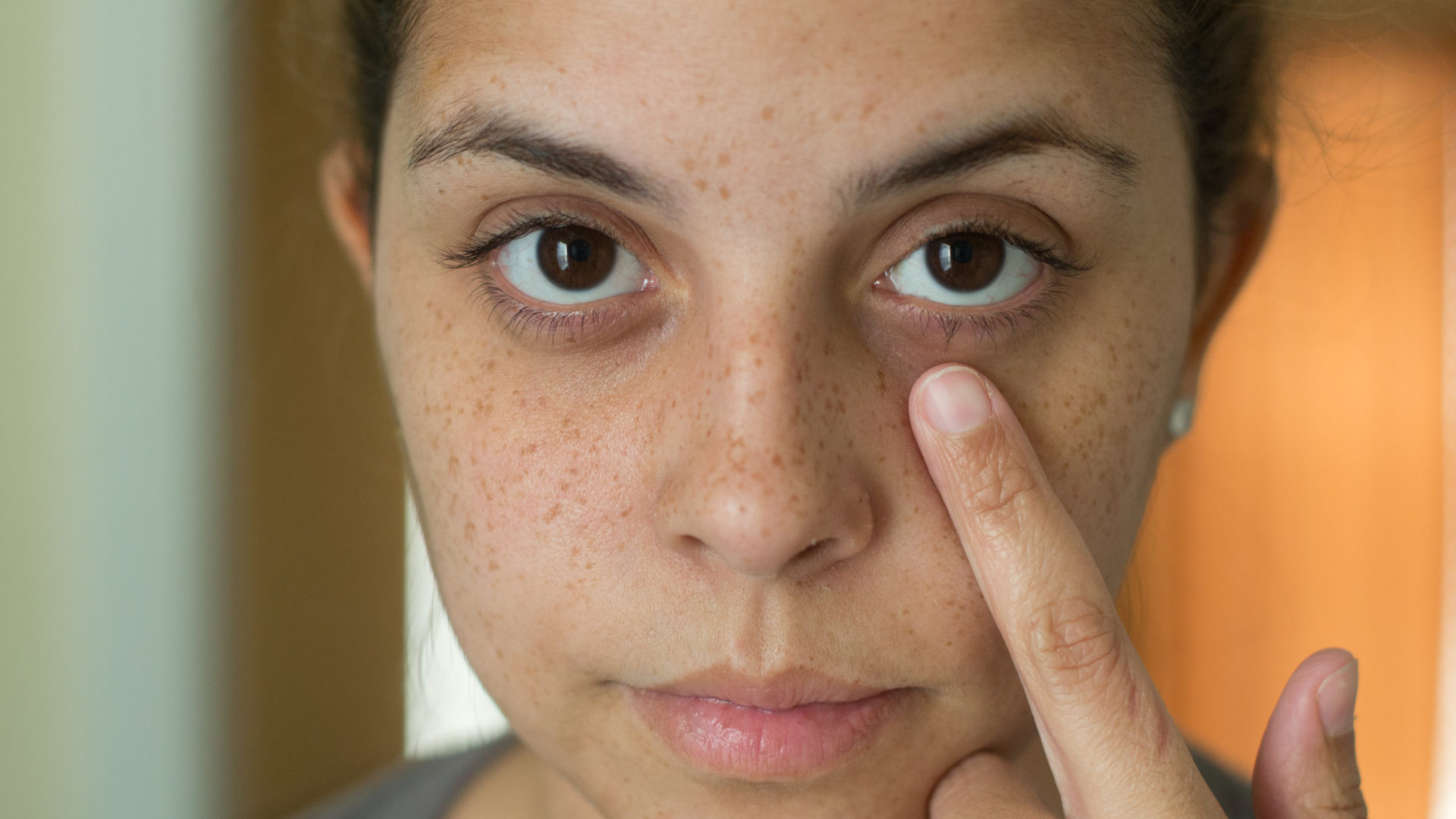 These include seborrheic dermatitis, eczema, psoriasis, shingles, and rosacea. Although all these conditions cause facial redness, they have other key identifiers to help you obtain the correct treatment. We’ll dive into those below.
These include seborrheic dermatitis, eczema, psoriasis, shingles, and rosacea. Although all these conditions cause facial redness, they have other key identifiers to help you obtain the correct treatment. We’ll dive into those below.
What Does Seborrheic Dermatitis Look Like?
Two common forms of seborrheic dermatitis are cradle cap and dandruff, and while neither are contagious, they can cause discomfort and/or embarrassment. Cradle cap occurs on an infant’s head (hence the name cradle cap) and often appears as white or yellow scaly patches.
When seborrheic dermatitis continues past infancy, it becomes more flakey and itchy. This is when it is more commonly known as dandruff. It can also sometimes be pink and greasy and extend beyond the scalp to the face, ears, back, and chest.
What Does Eczema Look Like?
There are many different types of eczema. The most common form of eczema is atopic dermatitis. It’s very common in children, but symptoms often become milder as you age. It is often associated with a history of asthma or seasonal allergies. Because symptoms can become less intense as you age, they can differ slightly depending on your age.
It is often associated with a history of asthma or seasonal allergies. Because symptoms can become less intense as you age, they can differ slightly depending on your age.
In infants, eczema appears suddenly and causes the skin to become scaly, dry, and very itchy. The affected areas can sometimes drain fluid. In children and adults, it often occurs in skin creases, such as on the neck, elbows, and knees. It is bumpy, slightly lighter or darker than your normal skin tone, and the affected area can thicken.
What Does Psoriasis Look Like?
Similar to eczema, there are different types of psoriasis, but the most common form is plaque psoriasis. Approximately 6.7 million adults in the US have been affected by plaque psoriasis. Plaque psoriasis appears as plaques of red skin covered by silver-colored scales. They’re often painful and itchy, as well as often becoming cracked and bloody.
What Do Shingles Look Like?
Shingles are a viral infection caused by the same virus that causes chickenpox. However, chickenpox and shingles are different conditions. The skin affected by shingles is often sensitive to the touch, and at times can be painful. After the pain appears, blisters and a red rash develop. The rash most often appears on the abdomen, but also occurs on the face and other areas of the body.
However, chickenpox and shingles are different conditions. The skin affected by shingles is often sensitive to the touch, and at times can be painful. After the pain appears, blisters and a red rash develop. The rash most often appears on the abdomen, but also occurs on the face and other areas of the body.
What Does Rosacea Look Like?
In case you haven’t noticed a recurring theme, there are different types of rosacea, just like many of the other health conditions discussed. Although each type of rosacea is most likely to affect your face, they each have their own set of symptoms.
Ocular rosacea causes the eyes to become red and irritated, as well as causes swollen eyelids and a bump often mistaken for a sty. Phymatous rosacea causes your skin to thicken and form a bumpy texture. Papulopustular rosacea, also known as acne rosacea, is identified by large, painful blemishes deep within the skin. Erythematotelangiectatic rosacea, the most common type of rosacea, is known to cause flushing, redness, and visible blood vessels.
How Do I Get Rid of Red Patches on My Face?
The treatment for red patches on your face will vary based on the cause. However, your dermatologist will likely prescribe one (or a combination) of the following as the best treatment for facial redness: topical products, prescription drugs, laser treatment, or light therapy.
Topical products are most commonly used for rosacea, eczema, and seborrheic dermatitis treatment. Acne wash or Azelaic Gel can be prescribed as part of your rosacea treatment. For eczema and seborrheic dermatitis, products can include dandruff shampoo, barrier repair creams, and anti-itch creams and ointments.
Prescription drugs are a common aspect of rosacea, shingles, and psoriasis treatment. Steroids can be used to treat small patches of psoriasis and retinoids, in pill form, can help to slow the production of skin, thereby reducing plaques. Antiviral medications are used in shingles treatment to shorten the duration of and lessen the intensity of symptoms.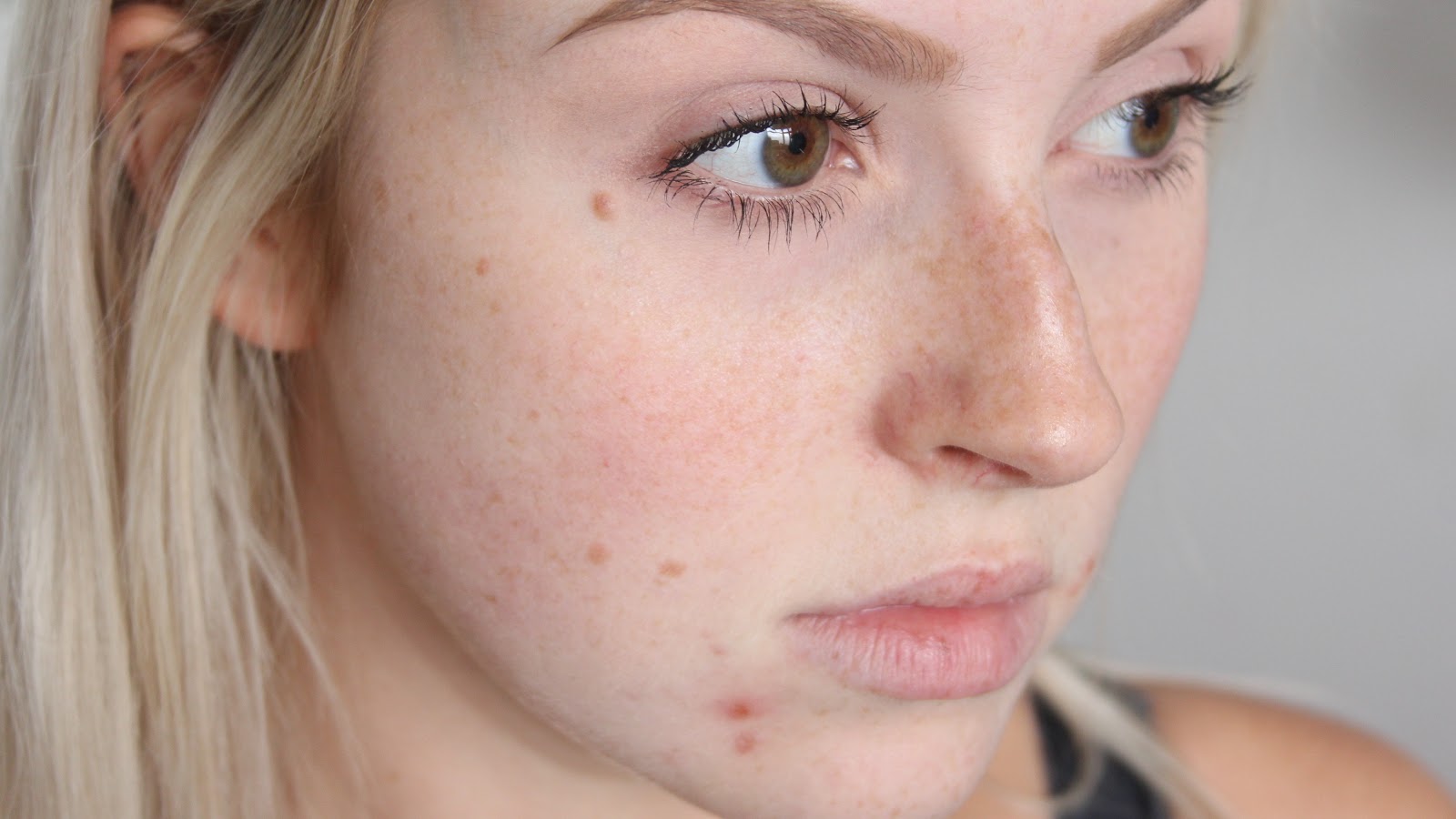 If topical methods and prescription drugs have not alleviated your symptoms, your dermatologist may consider prescribing laser treatment or light therapy depending on your symptoms.
If topical methods and prescription drugs have not alleviated your symptoms, your dermatologist may consider prescribing laser treatment or light therapy depending on your symptoms.
If you are experiencing red patches on your face, contact us at Vujevich Dermatology Associates to schedule an appointment. Our expert team will build an individualized treatment plan to alleviate your symptoms and work with you to lessen the severity of future occurrences. You can reach our team at 412-429-2570. You can also follow us on Facebook to see what’s new in the world of dermatology.
Posted in Uncategorized.
What Causes Red Spots On Skin & How To Treat Them – SkinKraft
Listen to this article
Your browser does not support the
audio element.
How often have you spotted red spots on your skin? Well, don’t be alarmed if they occur again. The wisest thing to do is pay a visit to your doctor. This is because there can be many reasons behind them – from allergic reactions to other skin conditions. The underlying cause is hard to determine without medical examination.
The underlying cause is hard to determine without medical examination.
In this article, we list out all the possible causes of red spots and their treatments for your knowledge.
WHAT EXPERT SAYS
“Red spots that appear on your skin can be caused by many different factors, including an infection, medical condition, skin irritation, or allergy. Some red spots go away on their own, but others may need treatment or medication to resolve them fully”.
Dr. Harish Koutam, (MBBS, MD – Dermatology, Venereology & Leprosy), Chief Dermatologist, SkinKraft
Highlights:
- Causes Of Red Spots On Skin
- How To Remove Red Spots On Skin With Home Remedies?
- Do You Get Red Spots On Skin During Pregnancy?
- When To See A Doctor?
Causes Of Red Spots On Skin
Appearance of red spots on your skin can be alarming. There could be many reasons behind the red spots on your skin.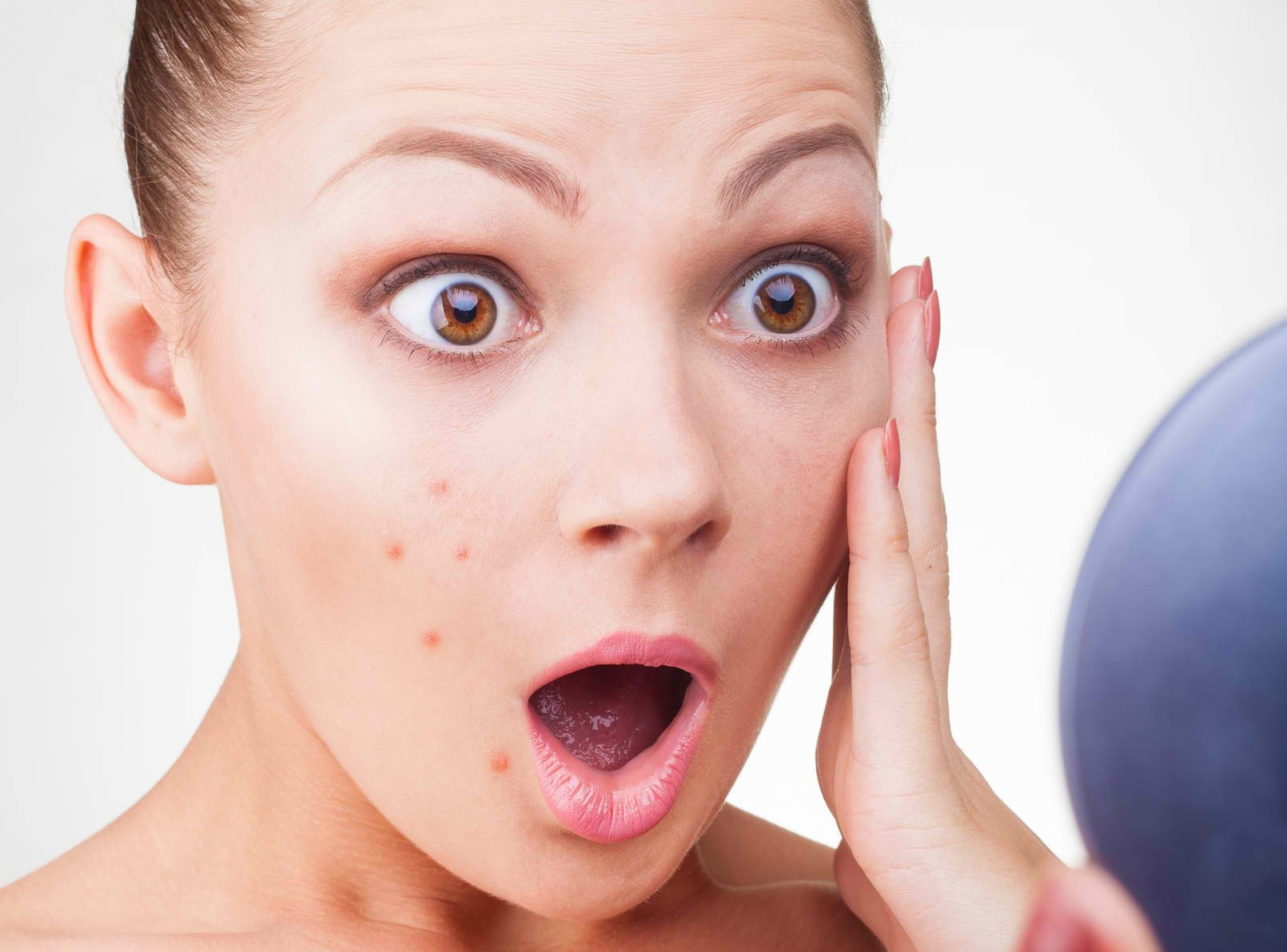 In most cases, the underlying causes are hard to determine.
In most cases, the underlying causes are hard to determine.
According to SkinKraft Laboratories’ chief dermatologist, Dr. Harish Koutam, “Red spots that appear on your skin can be caused by many different factors, including an infection, medical condition, skin irritation, or allergy. Some red spots go away on their own, but others may need treatment or medication to resolve them fully. Red spots can also occur due to contact dermatitis, purpura, petechia, cherry angiomas, drug rash, lichen planus, etc.”
To identify the accurate reason, you may need to consult a doctor. We are listing a few common factors that lead to red spots on your skin. Take a look!
1. Pityriasis Rosea
Pityriasis rosea is an inflammatory condition that is often compared to a drooping tree because of how it looks. It usually shows up as a large, oval patch on your skin at first which is later accompanied by smaller red spots on the chest, torso, back and abdomen. The spots can be itchy or scaly.
Researchers aren’t sure about the exact cause of this skin condition. However, some evidence indicates its link to a viral infection. As per a study on pityriasis alba by National Organization for Rare Disorders (NORD), this condition can affect any age group. However, it usually develops in people between the ages 10-35.
Symptoms
- Headache, nausea and fatigue before the patch appears
- Small red spots across your back, chest or abdomen
- Itchy rash
- Scaly red spots, often with a heightened border
Treatment
Pityriasis rosea usually goes away on its own within 8-10 weeks. To speed up the healing process and relieve you of symptoms, your dermatologist may prescribe over-the-counter topical treatments like calamine lotion or zinc oxide. Antihistamines may also be recommended to reduce redness and itchiness. Products containing oatmeal may also help relieve your skin of symptoms (1). You can take lukewarm showers too to get relief.
In some instances, your doctor may recommend taking prescription drugs such as corticosteroids to reduce itching and swelling, or antiviral medication to manage the symptoms. You may also be asked to get some natural or artificial sunlight as they are said to reduce the duration of the rashes. However, this might have side effects too.
2. Acne
Acne can be one of the major causes of the appearance of red spots on your skin. It usually affects the face, back, neck, chest and pubic area.
Acne occurs when tiny pores on your skin get clogged by dirt and bacteria. This may result in the appearance of tiny red bumps on the surface of your skin. These bumps may or may not have a head and are usually filled with pus.
Symptoms
- Tiny, red bumps on face, neck, back or chest
- Painful, red bumps/cysts
- Pimple-like red spots
- Usually have a white head
Treatment
Treatment typically depends on the severity and type of acne. If you have a breakout every month, your doctor may recommend topical treatments like benzoyl peroxide, topical retinoids or salicylic acid (2) (3). In case of severe cystic acne, your dermatologist may recommend a topical treatment in combination with oral medication like isotretinoin or antibiotics.
If you have a breakout every month, your doctor may recommend topical treatments like benzoyl peroxide, topical retinoids or salicylic acid (2) (3). In case of severe cystic acne, your dermatologist may recommend a topical treatment in combination with oral medication like isotretinoin or antibiotics.
Laser treatment is another most popular method to remove red marks left behind by acne (4). It involves the removal of the topmost layer of your skin, reducing the appearance of these marks. This process uses focused light therapy and is chemical-free.
Chemical peeling is a process involving the removal of dead skin cells and the topmost layer of your skin.(5) Chemical peels work as exfoliators and come in three different types – superficial, medium and deep peels. Depending on the severity of your marks, your dermatologist may recommend chemical peeling as a treatment option (6).
3. Heat Rash
Just like acne, heat rashes (7) occur when the pores in your skin get clogged with sweat, especially after constant sun exposure in highly humid weather. While traveling your skin’s surface, sweat can sometimes get blocked, causing tiny red bumps to appear (8). Intense exercise, hard work or any physical activity that causes you to sweat heavily can lead to heat rash. It may also happen to those who are confined to bed for long periods, especially if they have a fever.
While traveling your skin’s surface, sweat can sometimes get blocked, causing tiny red bumps to appear (8). Intense exercise, hard work or any physical activity that causes you to sweat heavily can lead to heat rash. It may also happen to those who are confined to bed for long periods, especially if they have a fever.
Heat rashes look like reddened skin with tiny blisters and most commonly show up in areas where you sweat the most and the ones where your skin is likely to rub against something. These areas include your pubic area, armpits, neckline and other areas prone to sweat.
Symptoms
- Red bumps on surface of skin
- Itchy and painful bumps
- Tends to reduce when skin cools down
Treatment
Heat rashes usually disappear when your body cools down. You need to make sure that the affected area is cool, dry, and free of irritation. Take cool baths or oatmeal baths, apply cold compresses, wear loose clothes, and avoid thick moisturizers.
Such rashes are usually not harmful and resolve on their own. However, neglecting them may lead to secondary infection. To soothe irritated skin, your doctor may recommend for you to use calamine lotion or any other topical cream. In case you notice any signs of infection along with the rashes or pus oozing from it, consult your doctor immediately.
4. Allergies
Allergic reactions occur due to immune system responses (9). This happens when your body or skin comes into contact with something that it considers foreign. Allergic skin reactions can be triggered by airborne allergens, certain foods like eggs, peanuts, insect bites, medicines particularly penicillin, etc.
If you have sensitive skin, you are likely to spot red rashes on your skin every now and then. Allergic reactions can also cause red patches or red spots to develop on your skin’s surface.
Symptoms
- Red patches on skin
- Itchy and painful patches or spots
- Occurs when in contact with a substance
- Settles down within a few days
Treatment
Your doctor may recommend a topical cream or lotion to soothe symptoms of an allergic reaction like itchy skin.
Also, try to avoid foods or medicines that are likely to trigger allergic reactions on your skin.
SkinKraft Tip:
If you have severe allergies, you are at high risk of anaphylaxis, a life threatening medical emergency. Avoid certain foods like eggs, milk, peanuts, medications and insect stings as they are the most common triggers of anaphylaxis.
5. Drug Rash
Drug rashes look like raised red bumps, a flat red rash, or scaly skin. Certain medication can be the culprit behind red rashes or spots on your skin. Any drug/medication can cause rashes. However, the most common ones occur due to the intake of antibiotics or anti-seizure drugs (10)
Drug rashes can happen to people of all ages and of both genders. Drug rashes can lead to a condition called DRESS. This condition can cause high fever, flu-like symptoms, burning of the skin and organ damage. DRESS requires immediate medical attention.
Symptoms
- Blisters
- Red bumps
- Itching
- Peeling skin
- Painful bumps
Treatment
These rashes tend to fade away when you discontinue taking the medication that caused them. Antihistamines may be recommended to reduce inflammation and other symptoms.
Antihistamines may be recommended to reduce inflammation and other symptoms.
6. Contact Dermatitis
Contact dermatitis occurs when your skin reacts to something it comes into contact with (11). This is a dry skin condition. Harsh skincare products usually cause contact dermatitis, if you have extremely dry skin. A study by the Indian Journal of Dermatology states that an estimated 15%–20% of the general population suffers from contact allergy.
Symptoms
- Red spots
- Hives
- Swelling of skin
- Itchy and painful bumps/rashes
- Scaly patches of skin
Treatment
Anti-itch creams are used to relieve contact dermatitis symptoms (12). Wet compresses are also an option to help reduce itchiness.
Note:
Scratching the affected area may lead to an itch-scratch cycle.
7. Diaper Rash
As the name suggests, a diaper rash occurs around the pubic or ‘diaper-covered’ area of the body. Diaper rashes are usually caused due to bacterial or yeast infections (13). Contact dermatitis can also contribute to the development of rashes around this area.
Diaper rashes are usually caused due to bacterial or yeast infections (13). Contact dermatitis can also contribute to the development of rashes around this area.
This condition can affect anyone wearing diapers including adults, babies, and toddlers. It looks like a pink-to-red colored rash, or peeling or irritated looking skin.
Symptoms
- Red tender-looking skin
- Occurs on buttocks, thighs and genitals
Treatment
Less is more in this case. Keep the rash away from fragrances and harsh skincare products. Cleansing the rash with lukewarm water followed by the application of petroleum jelly is recommended.
8. Psoriasis
Psoriasis is an autoimmune disease. It usually affects adults. However, some children can be victims too. Researchers are not sure what might be the exact causes of psoriasis, but they speculate a combination of genetics and environmental factors to be causing the condition.
When the body triggers immune system responses to fight bacteria and other foreign substances, it may sometimes overreact, causing the development of red spots and bumps on the skin of your elbows, knees, scalp, etc. These are accompanied by scaly, itchy and painful red patches of skin (13) (14).
These are accompanied by scaly, itchy and painful red patches of skin (13) (14).
Symptoms
- Scaly, itchy patches on the body
- Causes itching and burning
Treatment
Psoriasis can be of different types and each of them appears distinct. Your doctor can help diagnose it by its appearance and treat it accordingly. In rare cases, your doctor may conduct a skin biopsy. Various topical and oral treatments are available to relieve symptoms. Topical medications include topical corticosteroids, anthralin, topical retinoids, salicylic acid and moisturizers(15).
Phototherapy is also used in some cases to treat psoriasis. In some cases oatmeal baths and cold compresses can be helpful too.
9. Lichen Planus
Researchers have little or no evidence as to what causes lichen planus. This condition is the development of raised, red or pink bumps, usually around a wound (16). Red, scaly spots or rashes may appear in your mouth, on your wrists, ankles, and back. Your skin gets rough and scaly where the patches continue to reappear. These patches can be itchy.
Your skin gets rough and scaly where the patches continue to reappear. These patches can be itchy.
Did You Know?
Lichen planus typically occurs in people under the age bracket of 30-60 years. However, it can affect younger individuals and older people as well.
Symptoms
- Red, scaly bumps or spots
- Painful or itchy rashes with sharp borders
- Ulcers on the skin
- Spots may darken in color
Treatment
The condition isn’t contagious, but can’t be cured. It usually clears up by itself within several months unless it’s chronic. Your doctor may recommend antihistamines to reduce symptoms like itching.
Phototherapy with UV light can reduce the symptoms too while steroid creams or ointments can be effective in reducing inflammation and redness. Such creams should be applied to the itchy spots and as soon as the spots change from brown color to gray, you should stop the treatment. Those with severe symptoms can take oral tablets, only under the supervision of the doctor.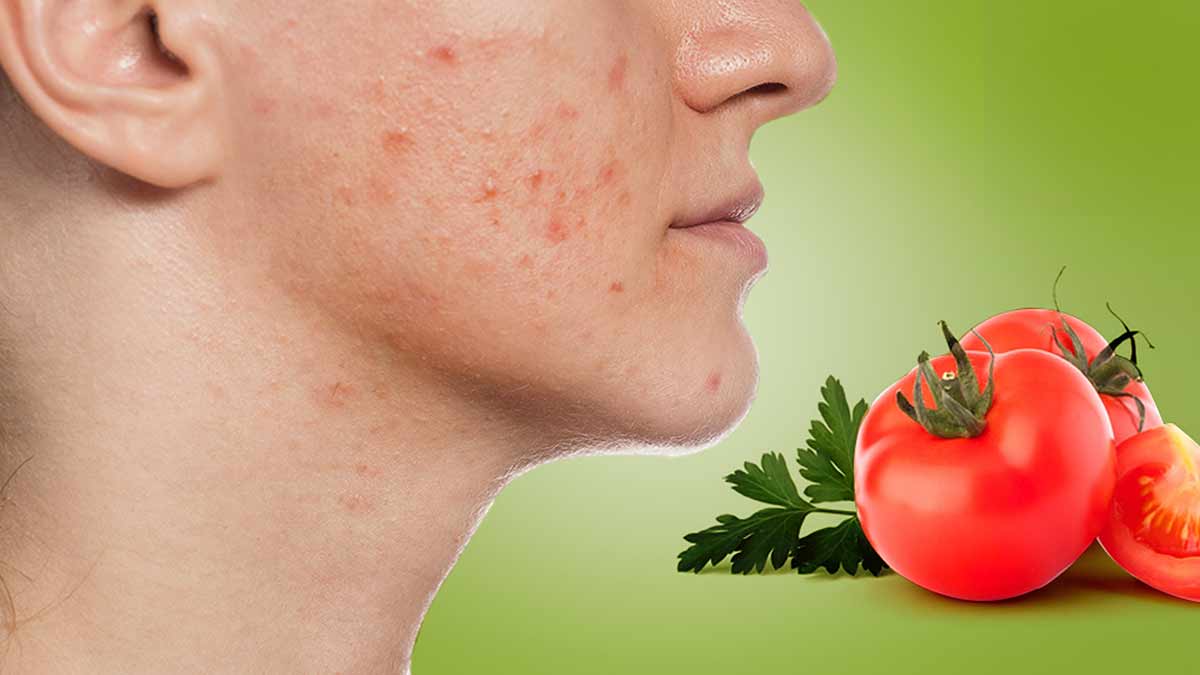
Topical corticosteroids can also be used to treat oral lichen planus (17).
10. Swimmer’s Itch
This rash occurs if your body is exposed to parasite-infested water. (18) (19) This usually takes place in stagnant water bodies like ponds and lakes. Oceans can also be infested with parasites at times. When snails get infected with this parasite, they tend to spread it in these water bodies.
Symptoms
- Red, itchy rashes
- Red bumps or spots
Treatment
Antihistamines may be recommended by your doctor to relieve you of symptoms. Lukewarm baths and anti-itch creams may help soothe the rash.
Word of Caution:
Although antihistamines are used to soothe symptoms, they can cause allergic reactions. Talk to your dermatologist before using antihistamines to treat your red spots or rashes. An alternative to using antihistamines is topical application of hydrocortisone cream. These are effective when used in concentrations of 1 percent.
11. Petechiae
These small red spots resemble rashes and primarily occur due to the rupture of tiny blood vessels (capillaries) under your skin. The pinpoint red dots (20) in a cluster can appear on your arms, legs, buttocks, and stomach. They usually don’t itch, however, they can spread to other parts of your body, forming large patches. These may occur in scarlet fever, sepsis, leukemia, vitamin C & K deficiency, etc. (21)
In most cases, petechiae caused by bacterial or viral infection starts getting better as soon as the infection starts healing. On the other hand, petechiae caused due to a medication starts showing improvement once you discontinue taking the medicine.
The petechiae treatment will depend on the cause and severity of the condition. Your doctor may prescribe you medicines like antibiotics to treat infection, corticosteroids to soothe inflammation, medicines like azathioprine, methotrexate to suppress the immune system. Over-the-counter pain relievers like ibuprofen, acetaminophen too can give you relief from the symptoms.
12. Pimples
Pimples are red spots that develop on your skin, chest, and upper back. They occur when your skin pores are clogged with oil, dirt, and dead skin cells. These when mixed with bacteria, cause irritated, inflamed, red spots.
Usually, you can treat mild pimples at home with the help of over-the-counter acne products. However, severity can result in acne vulgaris or cystic acne which needs medical attention to be treated.
Treatment options include topical products, oral antibiotics, corticosteroid injections, and chemical peels, among others.
Pimples on your armpit are also a common occurrence. They appear as red small, painful red dots. Usually, they can be treated with at-home remedies, however, you may consult with your doctor to identify the exact cause and resolve them.
How To Remove Red Spots On Skin With Home Remedies?
There are simple yet effective remedies that you can try at home using natural ingredients to manage red spots on your skin.
1. Coconut Oil
A wonder ingredient in skincare, coconut oil helps to manage multiple skin concerns including red spots. It helps to soothe itchiness, reduce redness and eventually remove red spots on regular use.
You can mix coconut oil with other ingredients to make a face pack. Also, you can apply virgin coconut oil or an organic one to your slightly damp skin and massage it in circular motions for a while till it gets absorbed. Apply this on the affected parts of your skin during the night and wash it off the next morning.
2. Aloe Vera
A natural healer, aloe vera is a great moisturizer too. Aloe vera gel can calm irritated skin and ailments and its antibacterial and anti-inflammatory properties can keep infections at bay. Aloe vera’s healing compounds can reduce red spots and make your skin glowing and healthy.
You can simply scoop out the gel from a freshly extracted aloe leaf and massage it on the affected areas of your skin. Leave it for 20 minutes and then rinse with water. You may also use a face mask with freshly extracted gel and cucumber juice to help soothe inflammation and manage redness.
You may also use a face mask with freshly extracted gel and cucumber juice to help soothe inflammation and manage redness.
3. Lemon Juice
Lemon juice is effective in reducing redness and spots. Thanks to it’s bleaching properties. It contains citric acid that works as an astringent and helps maintain your skin’s pH.
You can squeeze a lemon, dip a cotton ball in it and dab it gently on the spots. Leave it to dry before washing it off with cold water. Use a moisturizer afterwards to prevent it from drying out your skin.
4. Apple Cider Vinegar
Apple cider vinegar can do wonders in healing sunburns, treating acne marks, reducing redness, and soothing itchy and irritated skin. Thanks to the astringent properties.
Take half a teaspoon of apple cider vinegar and dilute it with two tablespoons of water. Add a few drops of essential oil of your choice, mix well, and apply it to the red spots. Alternatively, you can also use a cotton pad, dip it in the mixture and apply it to the red spots and leave it for some time to dry. Later, you can wash it off with cool water. You can practice this twice daily.
Later, you can wash it off with cool water. You can practice this twice daily.
Do You Get Red Spots On Skin During Pregnancy?
Pruritic urticarial papules and plaques of pregnancy (PUPPP) is a condition that leads to itchy patches including small, red dots or bumps on the skin. This condition usually develops in the third trimester. As per a study by the American Academy of Family Physicians, 1 out of 130 to 300 people develop PUPPP. It initially appears as itchy red patches on the stomach and spreads to the arms, legs, and buttocks.
PUPPP is more common in women with first pregnancies (22). It may also be noticed among those with multiple pregnancies. However, it tends to go away after delivery. In most cases, topical corticosteroids, oral antihistamines, and oral prednisone are prescribed to treat this condition.
When To See A Doctor?
To determine the red spots on your skin you may visit your dermatologist who will treat them based on their appearance, severity, your medical history, or any underlying condition. Also, if you notice any of the symptoms associated with the red spots such as fever, swelling, or pus oozing from the rash, consult your doctor immediately.
Also, if you notice any of the symptoms associated with the red spots such as fever, swelling, or pus oozing from the rash, consult your doctor immediately.
Wrapping Up
Red spots that appear on your skin are usually harmless, not permanent, and are primarily caused due to infections, allergic reactions, or medical conditions. You can resort to home remedies or apply over-the-counter creams or take medicines to manage the symptoms. However, in case of severity, consult your doctor immediately to get a correct diagnosis and treatment.
Begin By Knowing Your Skin
References
1. Pityriasis Rosea: Diagnosis and Treatment – (2018)
https://pubmed.ncbi.nlm.nih.gov/29365241/
2. Clinical efficacy and safety of benzoyl peroxide for acne vulgaris: Comparison between Japanese and Western patients – (2017)
https://www.ncbi.nlm.nih.gov/pmc/articles/PMC5697687/
3. Treatment of acne vulgaris with salicylic acid pads – (1992)
https://pubmed.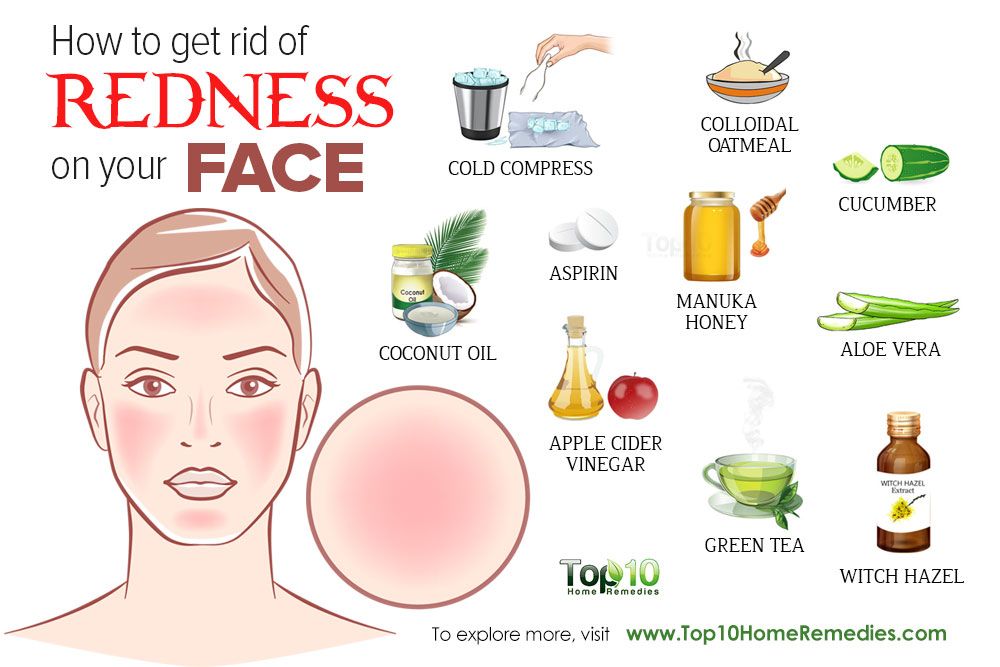 ncbi.nlm.nih.gov/1535287/
ncbi.nlm.nih.gov/1535287/
4. Low-level laser (light) therapy (LLLT) in skin: stimulating, healing, restoring – (2013)
https://www.ncbi.nlm.nih.gov/pmc/articles/PMC4126803/
5. Skin Resurfacing Chemical Peels – (2021)
https://www.ncbi.nlm.nih.gov/books/NBK547752/
6. Chemical peels in the treatment of acne: patient selection and perspectives – (2018)
https://www.ncbi.nlm.nih.gov/pmc/articles/PMC6053170/
7. Newborn Skin: Part I. Common Rashes – (2008)
https://www.aafp.org/afp/2008/0101/p47.html
8. Militia (2021)
https://www.ncbi.nlm.nih.gov/books/NBK537176/
9. Immunobiology: The Immune System in Health and Disease. 5th edition – (2001)
https://www.ncbi.nlm.nih.gov/books/NBK27112/
10. Drug eruptions: An 8-year study including 106 inpatients at a dermatology clinic in Turkey – (2012)
https://www.e-ijd.org/article.asp?issn=0019-5154;year=2012;volume=57;issue=3;spage=194;epage=198;aulast=Akpinar
11. Contact Dermatitis – (2021)
https://www.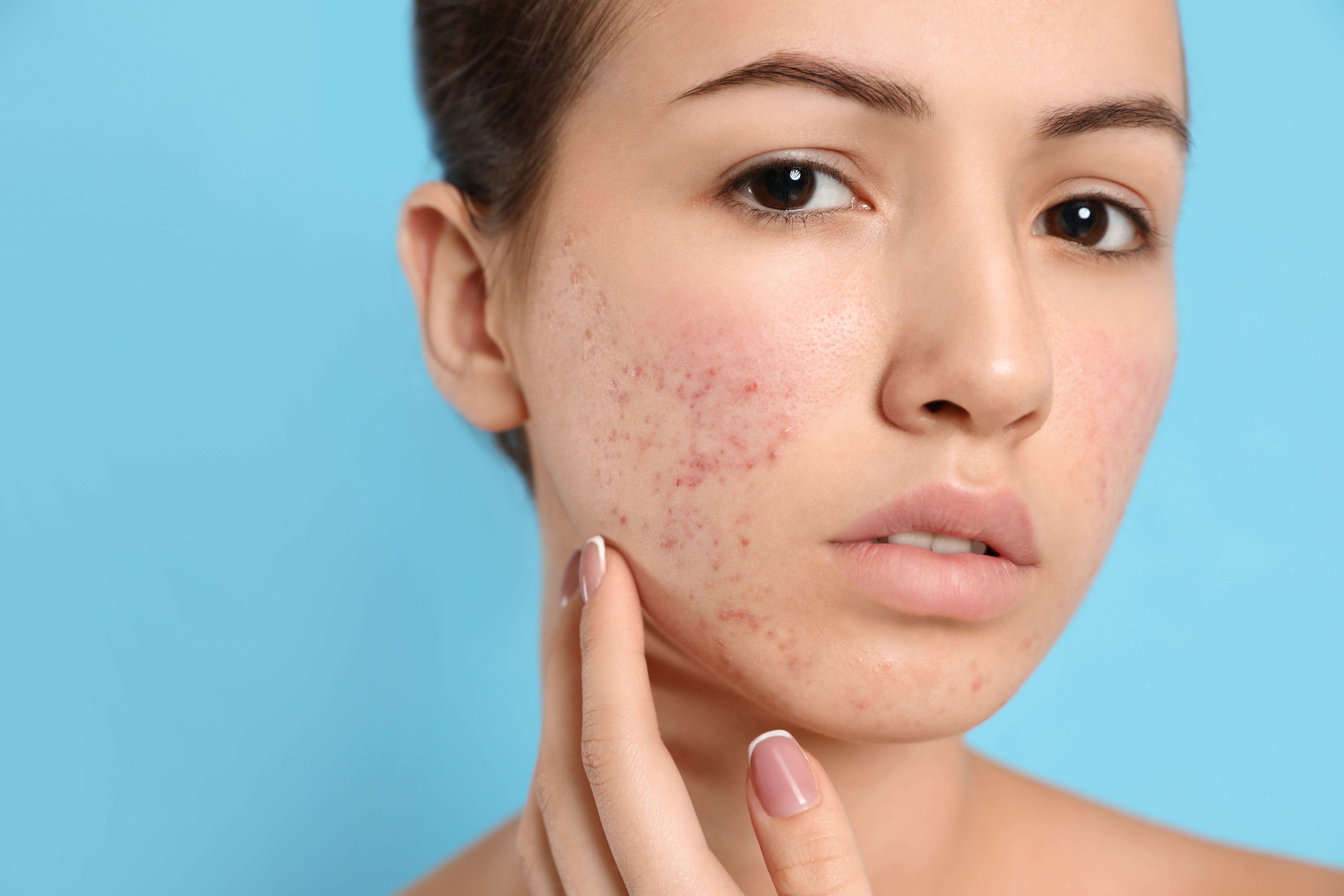 ncbi.nlm.nih.gov/books/NBK459230/#_NBK459230_pubdet_
ncbi.nlm.nih.gov/books/NBK459230/#_NBK459230_pubdet_
12. ECZEMA TYPES: CONTACT DERMATITIS TIPS FOR MANAGING – (2021)
https://www.aad.org/contact-dermatitis-tips
13. Diaper Rash- (2019)
https://kidshealth.org/en/parents/diaper-rash.html
14. Psoriasis
https://www.ncbi.nlm.nih.gov/books/NBK448194/#_NBK448194_pubdet_
15. Psoriasis – (2018)
https://www.nhs.uk/conditions/psoriasis/
16. The pathogenesis of psoriasis and the mechanism of action of tazarotene – (1998)
https://pubmed.ncbi.nlm.nih.gov/9777790/
17. Lichen planus – (2015)
https://dermnetnz.org/topics/lichen-planus
18. Diagnosis and Treatment of Lichen Planus – (2011)
https://www.aafp.org/afp/2011/0701/p53.html
19. Swimmer’s itch – (2021)
https://dermnetnz.org/topics/swimmers-itch
20. Swimmer’s Itch: Incidence and Risk Factors – (2004)
https://www.ncbi.nlm.nih.gov/pmc/articles/PMC1448328/
21. Petechiae – (2021)
https://www.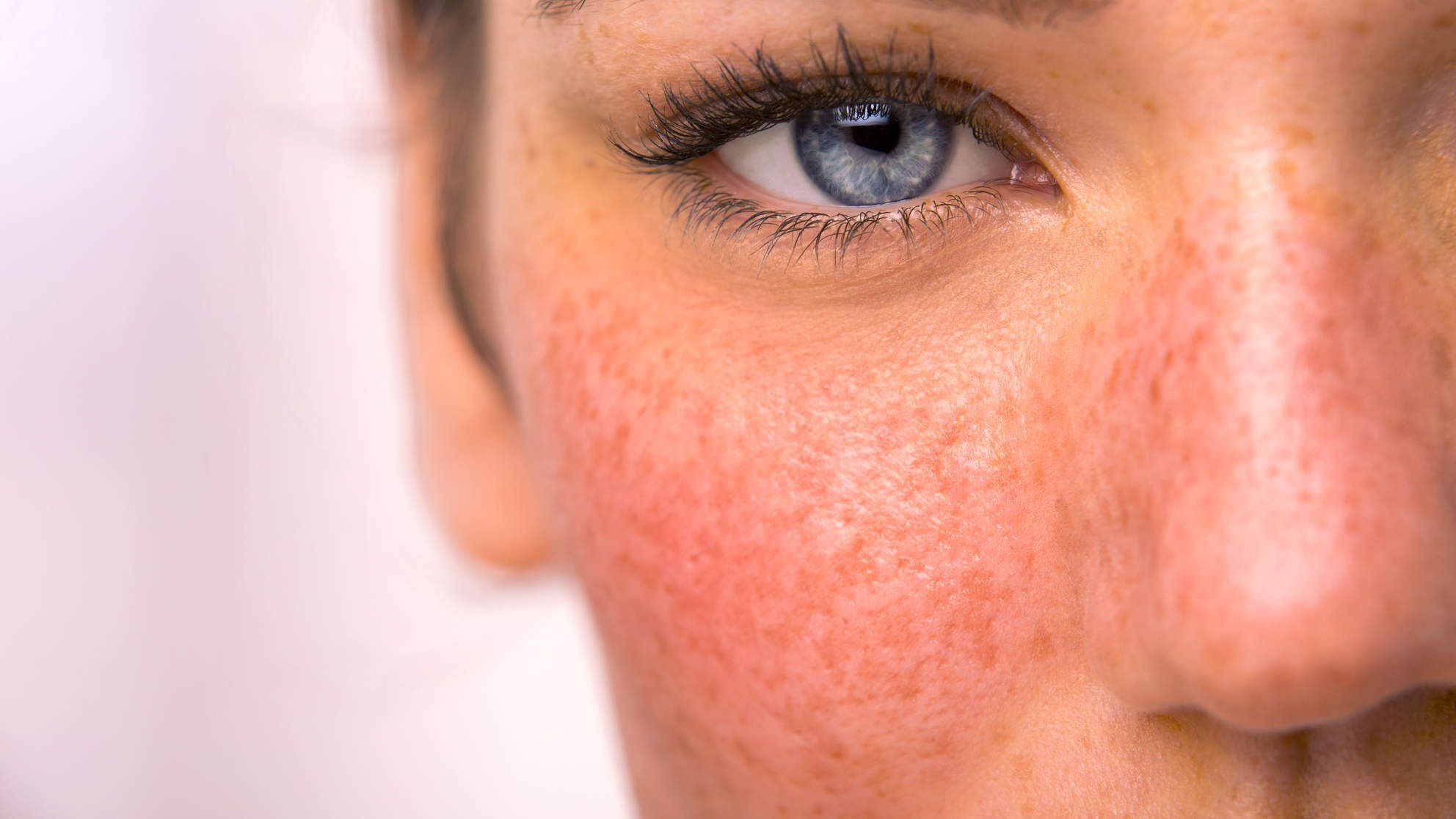 ncbi.nlm.nih.gov/books/NBK482331/#_NBK482331_pubdet_
ncbi.nlm.nih.gov/books/NBK482331/#_NBK482331_pubdet_
22. Petechial Rashes – (2010)
https://www.reliasmedia.com/articles/17635-petechial-rashes
23. Pruritic Urticarial Papules And Plaques Of Pregnancy – (2021)
https://www.ncbi.nlm.nih.gov/books/NBK539700/
what is it and how to remove it?
Surely many people have come across a situation where even with daily, thorough skin care, using the best cosmetics, proper nutrition, visiting a beautician, there comes a moment when red dots appear on the face for unknown reasons.
Most often they are localized on the cheeks and nose. To deal with this issue, it is necessary to determine the causes of these formations and what types of red spots exist.
Types of red spots on the face
Contact dermatitis.
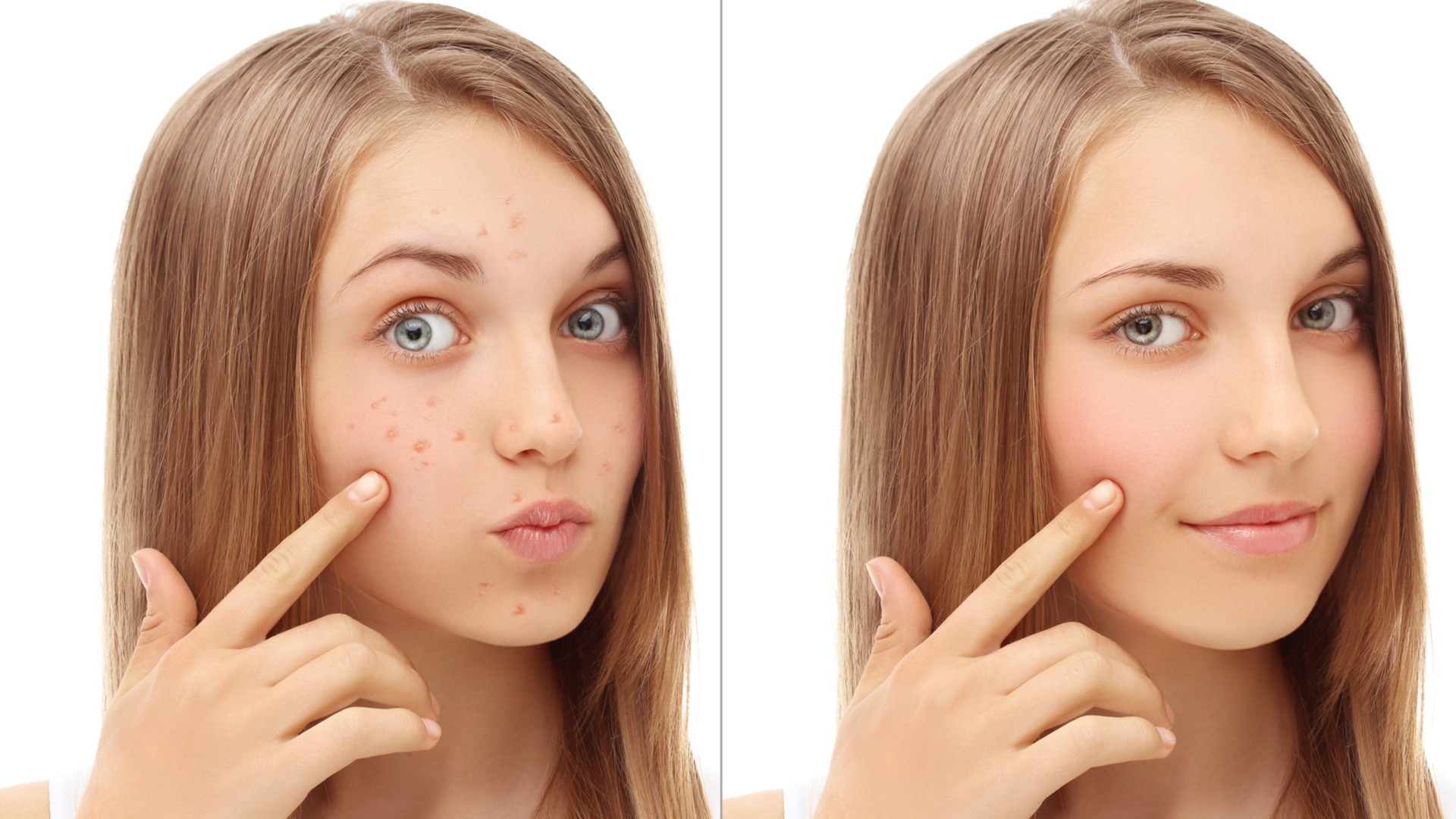
Contact dermatitis is characterized by redness, burning and, in some cases, even local swelling of the skin on the face. The reason may be the reaction of the body to contact with allergens or irritants: it may be inappropriate cosmetics, care products, even clothes, for example, washed with a new powder that came into contact with the skin. In the acute form, the skin reacts not only with erythema (redness) and irritation, but also with the appearance of vesicles, blisters and active itching.
At the first of these symptoms, we recommend that you immediately consult a dermatologist for advice, diagnosis and treatment. At home, it is important, first of all, to exclude skin contact with an irritant.
Atopic dermatitis
It is a chronic disorder that develops in childhood and recurs in adulthood in the form of red spots, rashes and peeling of the skin on the face. The reasons can be various factors, including: genetics, violation of the protective barrier of the skin, environmental factors, climatic conditions, allergens in food, household chemicals or cosmetics.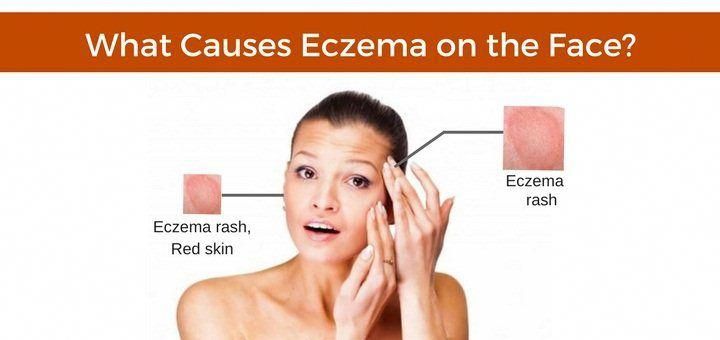
For example, atopic dermatitis can be provoked by: eating peanuts, dairy products, soybeans, staying in a dusty area for a long time, having pockets of mold at home, etc. this disease does not go away on its own, as in the case of contact dermatitis.
Infectious dermatitis
Both bacteria and microbes can be the source of infection. Among the causes of the disease in adulthood are sexually transmitted diseases, infections that affect the skin, microtrauma and extensive skin damage, postoperative complications of an infectious nature.
At risk for infectious dermatitis are patients with immunodeficiency, chronic venous insufficiency, intoxication of the body, young children and the elderly.
This type of dermatitis has the following manifestations: rash, redness, itching, peeling. The rash may take the form of nodules or blisters with pus inside. Only a dermatologist can make a diagnosis, identify provoking causes, and prescribe the correct antibacterial, antifungal, or antimicrobial treatment.
Discoid lupus erythematosus
This is an immune disease that is chronic and affects the skin, including the skin of the face, mainly in young women. The clinical picture is very ambiguous, it affects not only the skin, but also the cardiovascular system, mucous membranes, bronchopulmonary system, affects the kidneys, etc.
It is completely curable in 40% of cases. If the face is covered with red spots from discoid lupus erythematosus, then the dermatologist will prescribe a complex treatment that includes hormone therapy, taking multivitamins and cytostatic drugs that help fight the infection.
Blushing syndrome
Uncontrollable redness on the face or cheeks when agitated are signs of blushing syndrome or erythroderma. Violation can be triggered by a variety of reasons, which as a result affect the autonomic nervous system, and it, in turn, controls vascular tone. This may be a psychological condition, carcinoid syndrome, hot flashes in premenopause, drug treatment. Based on the causes of the disease, the doctor will prescribe a therapeutic, medical or surgical treatment.
Based on the causes of the disease, the doctor will prescribe a therapeutic, medical or surgical treatment.
Rosacea
It is a chronic non-infectious skin disease that can appear as red spots on the face that are localized on the forehead, eyelids, nose, cheeks. In the progressive form of the disease, small vessels appear in the affected areas, and then there is a burning sensation and small rashes.
Rosacea therapy involves complex (therapeutic and drug) treatment, as well as laser therapy to remove the vascular network, spots, redness.
Angioma
Angiomas are vascular flat or voluminous formations on the skin. They can be caused both genetically and appear as a result of a disruption in the hormonal system, due to injuries or prolonged sunburn. For the treatment of angiomas, laser treatment is used.
How to remove redness with a laser treatment?
Each of the disturbances that we have mentioned above appears on the skin in the form of red spots. It is possible to remove redness from the face with the right medical approach, both therapeutic and medication. Laser therapy has proven itself in combination with these techniques. Laser treatment allows you to eliminate skin defects on the face, which therapeutic methods do not always cope with:
It is possible to remove redness from the face with the right medical approach, both therapeutic and medication. Laser therapy has proven itself in combination with these techniques. Laser treatment allows you to eliminate skin defects on the face, which therapeutic methods do not always cope with:
- remove the vascular network and superficial vascular formations;
- remove redness;
- normalize microcirculation and nutrition of skin cells;
- strengthen vessel walls;
- smooth the leather surface.
Laser therapy also inhibits bacteria in the skin, that is, it has antiseptic properties. Laser treatment is carried out without anesthesia, the procedure does not damage the skin at all and does not leave burns and scars.
Which doctor to contact for advice
As we have already said, a dermatologist is responsible for diagnosing and prescribing treatment for spots and irritations on the face. He will collect the patient’s history, identify the cause of the disease visually or after a series of laboratory tests, and then prescribe a competent treatment.
In our clinic, dermatologists use neodymium laser, picosecond laser and IPL system to treat red spots on the face, based on the type of formation, localization and other signs.
Also, our doctors will give you recommendations on how to remove redness on the face at home, if such actions are necessary and sufficient.
The information published in the article is for informational purposes only, is not a call to action and should not be considered as expert advice. All decisions regarding the receipt of medical care should be made by the patient in full consultation with the doctor.
How to remove red spots on the face? Methods of treatment – Medicalaser
The skin of the face is exposed to dozens of harmful factors every day. Wind, sun rays, hand touches – all these are just a small part of external irritants that damage the skin of the face day after day, and which we try to actively resist. We use protective creams, perform comprehensive skin care, from cleansing to masks and peels twice a week. But what to do if red spots appear on the cheeks or how to remove red dots on the face? To deal with these issues, it is necessary to determine what caused these formations.
But what to do if red spots appear on the cheeks or how to remove red dots on the face? To deal with these issues, it is necessary to determine what caused these formations.
Red spots on the face: what can it be and how to remove them?
Contact dermatitis
This is redness, burning and even swelling of the face area caused by skin reaction to contact with allergens or irritants. Contact dermatitis can occur on the face after applying inappropriate cosmetics, skin care products, and sometimes after touching the chin and cheeks of clothing, for example, washed with a new powder. In an acute form, the reaction can manifest itself not only in the form of redness and irritation, but also aggravated in the form of blisters and unbearable itching.
How to remove purple spots on the face caused by contact dermatitis is usually explained by a dermatologist or cosmetologist. Therefore, we recommend that you consult a doctor at the first symptoms. At home, the first step is to stop skin contact with possible irritants.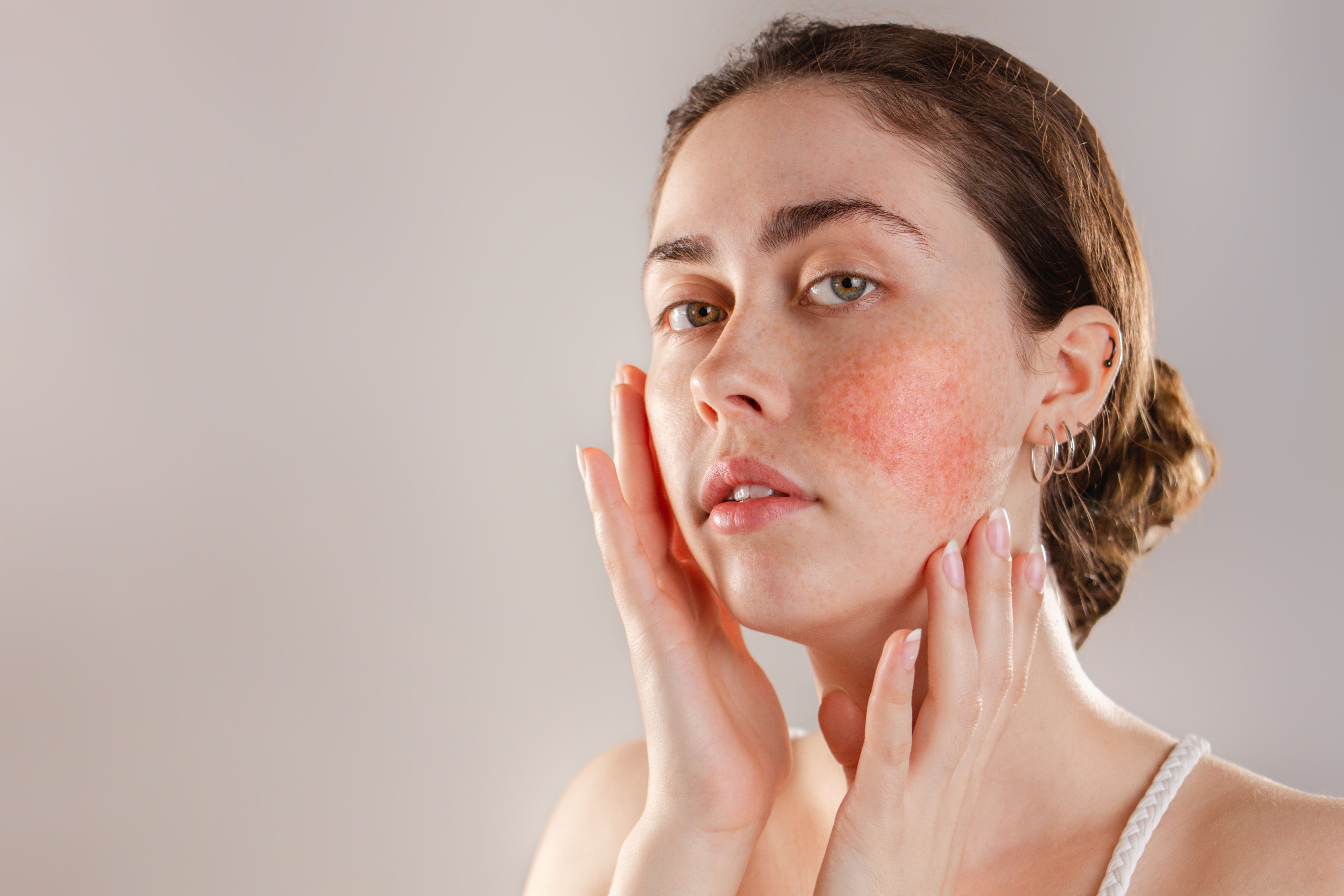 This in most cases allows you to correct the situation, and in a few days the irritation disappears. To eliminate itching, doctors prescribe antihistamines.
This in most cases allows you to correct the situation, and in a few days the irritation disappears. To eliminate itching, doctors prescribe antihistamines.
Atopic dermatitis
This is a chronic disorder that begins in childhood and recurs in adulthood in the form of red spots, rashes and peeling of the skin on the face. There are many causes of atopic dermatitis: genetic factors, violations of the protective barrier of the skin, the external environment, climate.
For example, to provoke atopic dermatitis can: the use of decorative and skin care cosmetics, eating peanuts, dairy products, soybeans, living in conditions of high levels of dust, the presence of mold at home, and even skin damage by Staphylococcus aureus. What to do if red spots appear on the face? In this case, the answer is simple – you need to contact a dermatologist, because unlike contact dermatitis, atopic dermatitis does not go away on its own.
Infectious dermatitis
How to remove red spots on the face caused by infectious dermatitis? It all depends on the source of the infection – bacteria or microbes. To do this, you should contact a therapist who, depending on the causes of the violation, will prescribe antibiotics to fight a bacterial infection or antihistamines against microbes.
To do this, you should contact a therapist who, depending on the causes of the violation, will prescribe antibiotics to fight a bacterial infection or antihistamines against microbes.
Treatment with drugs must be completed before removing red spots on the face with the help of apparatus procedures. If, after drug treatment, post-acne marks remain on the skin, they can be painlessly removed using laser therapy.
Discoid lupus erythematosus
This is a chronic immune disease that affects the skin, including the face. Unlike lupus, which is often misdiagnosed on House M.D. (systemic lupus erythematosus), the discoid form of the disease affects only the skin and is completely curable in 40% of cases. In the fight against discoid lupus erythematosus, therapeutic treatment is used: hormonal agents, multivitamins and cytostatic drugs are prescribed to help suppress the infection.
Blushing syndrome
Uncontrollable reddening of the cheeks or the entire face during excitement – this is the blushing syndrome or erythroderma. There can be many reasons for the violation, which as a result affect the autonomic nervous system, and it, in turn, controls vascular tone.
There can be many reasons for the violation, which as a result affect the autonomic nervous system, and it, in turn, controls vascular tone.
How to remove red spots on the face caused by blushing syndrome? Here it is important to identify why redness appears: due to psychological factors, carcinoid syndrome, hot flashes in premenopause, or due to medication. Based on the reasons, therapeutic, medical or surgical treatment is prescribed.
Rosacea
This is a chronic skin disease of the face that can manifest itself as red spots on the forehead, eyelids, nose, cheeks. With the progression of the disease, small vessels appear at the site of the lesion, and then there is a burning sensation and rashes similar to acne.
For the treatment of rosacea, therapeutic and drug treatment is used in combination with laser therapy, which allows you to remove the vascular network, remove redness and smooth the skin surface. Removing red spots on the face with a laser is quick and painless.
Angioma
In this article we will tell you how to remove red spots on the face, but we will also touch on the topic of red dots. Why red dots appear on the face and how to remove them?
Most often, speaking of red dots on the face, they mean angiomas – vascular formations similar to flat or voluminous moles. They occur for various reasons, including due to congenital predisposition, hormonal disorders, trauma, or constant exposure to the sun. For the treatment of angiomas, laser removal of red dots on the face is used.
Laser removal of red spots on the face – a universal way to restore the beauty of the skin
Each of the above disorders leads to the appearance of red spots on the face, but requires specific therapeutic and drug treatment. As for laser therapy, it has proven itself well in combination with these techniques.
Laser treatment makes it possible to eliminate skin defects on the face that therapeutic methods cannot cope with:
- painlessly smooth the surface of the skin;
- remove scars and scars;
- remove vasculature and superficial formations;
- remove redness.



